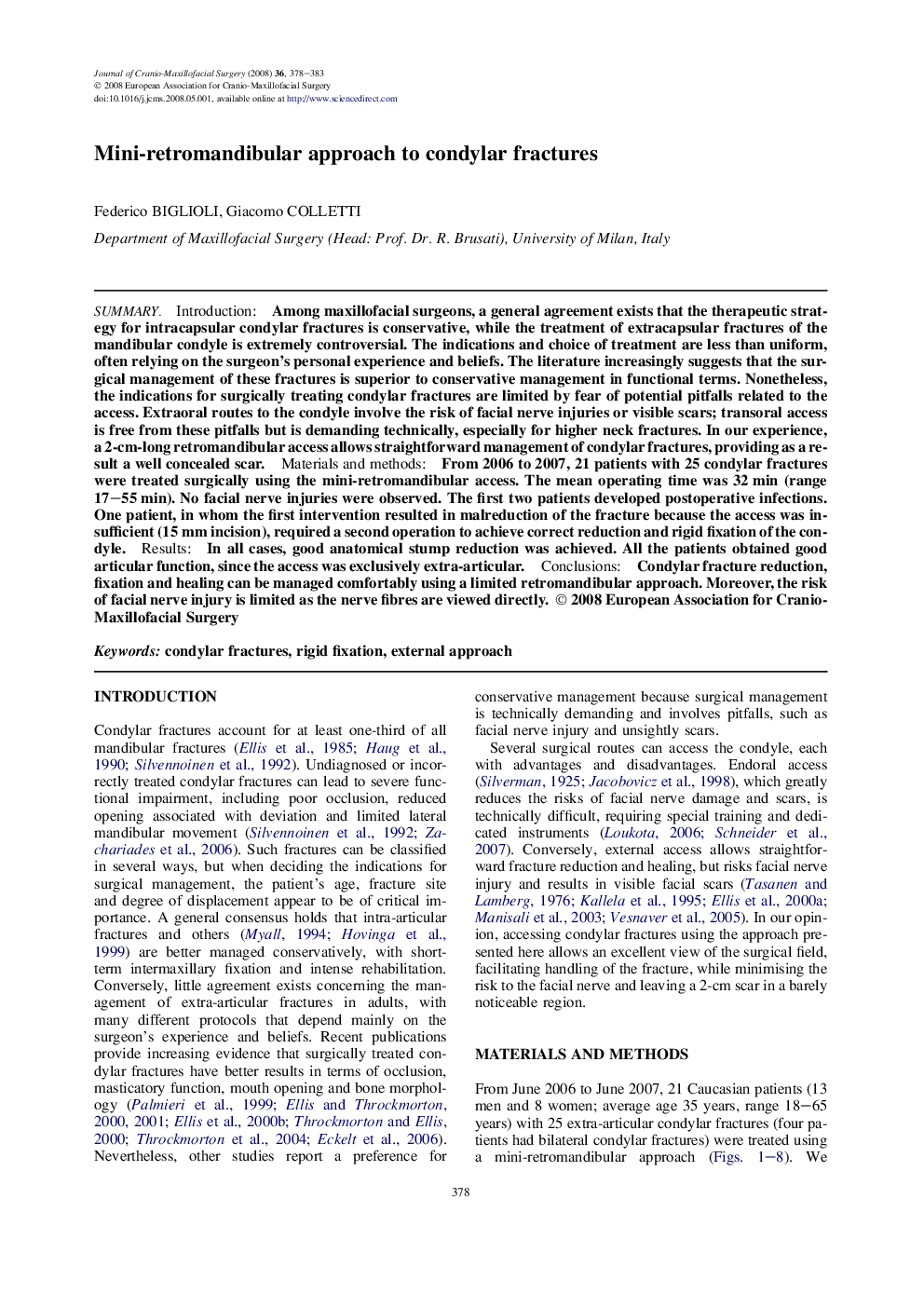| Article ID | Journal | Published Year | Pages | File Type |
|---|---|---|---|---|
| 3144265 | Journal of Cranio-Maxillofacial Surgery | 2008 | 6 Pages |
SummaryIntroductionAmong maxillofacial surgeons, a general agreement exists that the therapeutic strategy for intracapsular condylar fractures is conservative, while the treatment of extracapsular fractures of the mandibular condyle is extremely controversial. The indications and choice of treatment are less than uniform, often relying on the surgeon's personal experience and beliefs. The literature increasingly suggests that the surgical management of these fractures is superior to conservative management in functional terms. Nonetheless, the indications for surgically treating condylar fractures are limited by fear of potential pitfalls related to the access. Extraoral routes to the condyle involve the risk of facial nerve injuries or visible scars; transoral access is free from these pitfalls but is demanding technically, especially for higher neck fractures. In our experience, a 2-cm-long retromandibular access allows straightforward management of condylar fractures, providing as a result a well concealed scar.Materials and methodsFrom 2006 to 2007, 21 patients with 25 condylar fractures were treated surgically using the mini-retromandibular access. The mean operating time was 32 min (range 17–55 min). No facial nerve injuries were observed. The first two patients developed postoperative infections. One patient, in whom the first intervention resulted in malreduction of the fracture because the access was insufficient (15 mm incision), required a second operation to achieve correct reduction and rigid fixation of the condyle.ResultsIn all cases, good anatomical stump reduction was achieved. All the patients obtained good articular function, since the access was exclusively extra-articular.ConclusionsCondylar fracture reduction, fixation and healing can be managed comfortably using a limited retromandibular approach. Moreover, the risk of facial nerve injury is limited as the nerve fibres are viewed directly.
